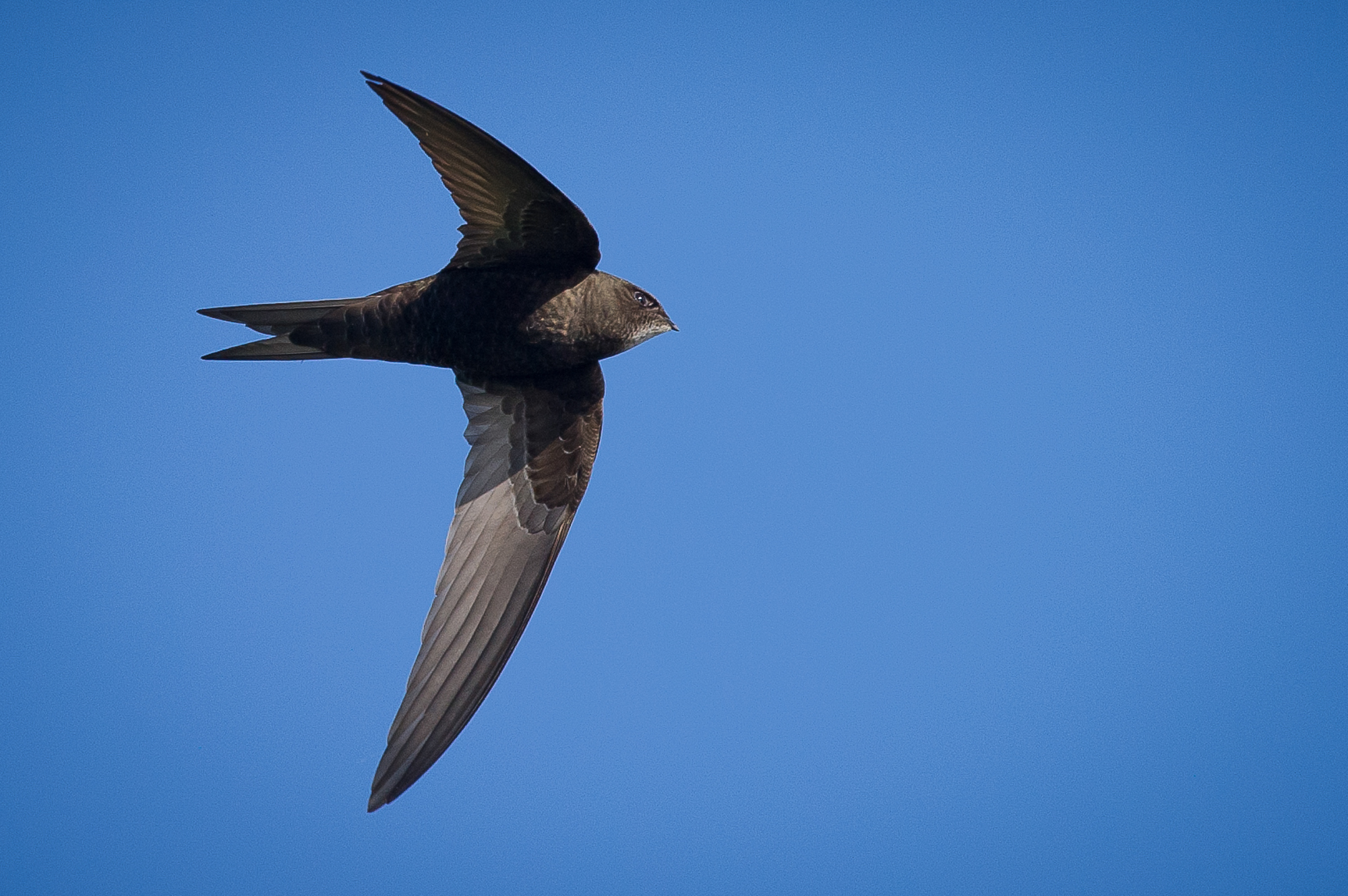Soaring swifts barely ever come down to earth and now it turns out that these perpetual aviators are the ultimate gliders, essentially riding air currents and thermals for free while snapping up lunch.

Once an adult swift bird (Apus apus) leaves its breeding colony and takes to the air migrating South, it won’t touch down again until returning home to nest 10 months later.
“Common swifts are exceptional in their level of adaptation to aerial life,” said Emmanuel de Margerie, a biologist from the CNRS (Centre National de la Recherche Scientifique) at the University of Rennes, France. He added, ‘Foraging, sleeping, preening and all other daily activities are performed in mid-air, day after day, week after week.”
So, when de Margerie decided to learn how the expert aviators manoeuvre in their aerial domain, he contacted biomechanist Tyson Hedrick in the biology department at UNC-Chapel Hill’s College of Arts & Sciences, who snapped up the opportunity.
“Their basic flight capabilities have been well studied in wind tunnel experiments,” said Hedrick. However, birds in wind tunnels never share the sky with others or contend with unexpected gusts of wind. de Margerie had filmed swifts soaring and swerving while foraging to feed their chicks and the movies provided the ideal opportunity to find out how much exertion it takes to keep an acrobatic swift on the wing in real life.
They published their discovery that swifts essentially hitchhike on rising currents to make their flight costs almost zero in Journal of Experimental Biology.
But the unique footage was not collected with a conventional camera. Mounting a pair of angled mirrors either side of a camera, with a third mirror in front of the lens to collect the reflections from the wide-set mirrors, de Margerie was able to film a pair of simultaneous movies — each from a slightly different perspective — which he could then analyse to perfectly reconstruct individual swift motions in 3D. “The current device is cumbersome,” said de Margerie, admitting that it takes time to learn how to track the swifts’ tortuous flight paths. “After some training, our undergraduate student Cécile Pichot was the most skilful at continuously following foraging swifts for relatively long flight times of up to six minutes,” he said.
Pichot and de Margerie then painstakingly reconstructed each flight and measured various details, ranging from the position of the swifts’ wings to the amount of time spent flapping, before passing the information on to Hedrick. He then calculated each bird’s instantaneous speed, in addition to the g-force that they pulled while turning corners and the amount of energy required to power each maneuver.
“Digesting this dataset into relevant, comparable results, while retaining the rich information present only in natural conditions was probably the hardest challenge of the study,” said de Margerie.
Impressively, the swifts spent the majority of their time gliding (71 percent), despite swooping and whirling around as they snapped insects from the air. And when Hedrick analyzed the birds’ acceleration as they turned corners, he was intrigued that the maneuvers were relatively sedate, pulling only 1.4 g, compared with the high acceleration turns (8 g) performed by cliff swallows — probably because the insects upon which the swifts dine move relatively slowly as they are carried in the breeze.
However, when Hedrick evaluated how much energy the tiny aerial hunters consumed while darting through the air, he was astonished that they were essentially riding air currents and thermals for free.
“Thermals act like an elevator for the bird,” said Hedrick, describing how vultures routinely hitch rides on the rising columns of air to swoop at high altitudes. “Scaling arguments led earlier researchers to believe that it [riding thermals] would be less useful to small birds like swifts,” he said. Yet, here were the swifts extracting energy from the air almost as effectively as vultures.
“I cannot express just how surprised we were,” said Hedrick.




